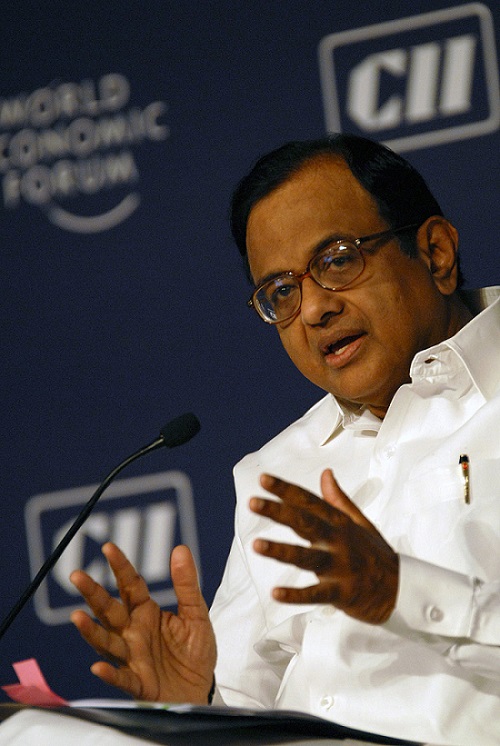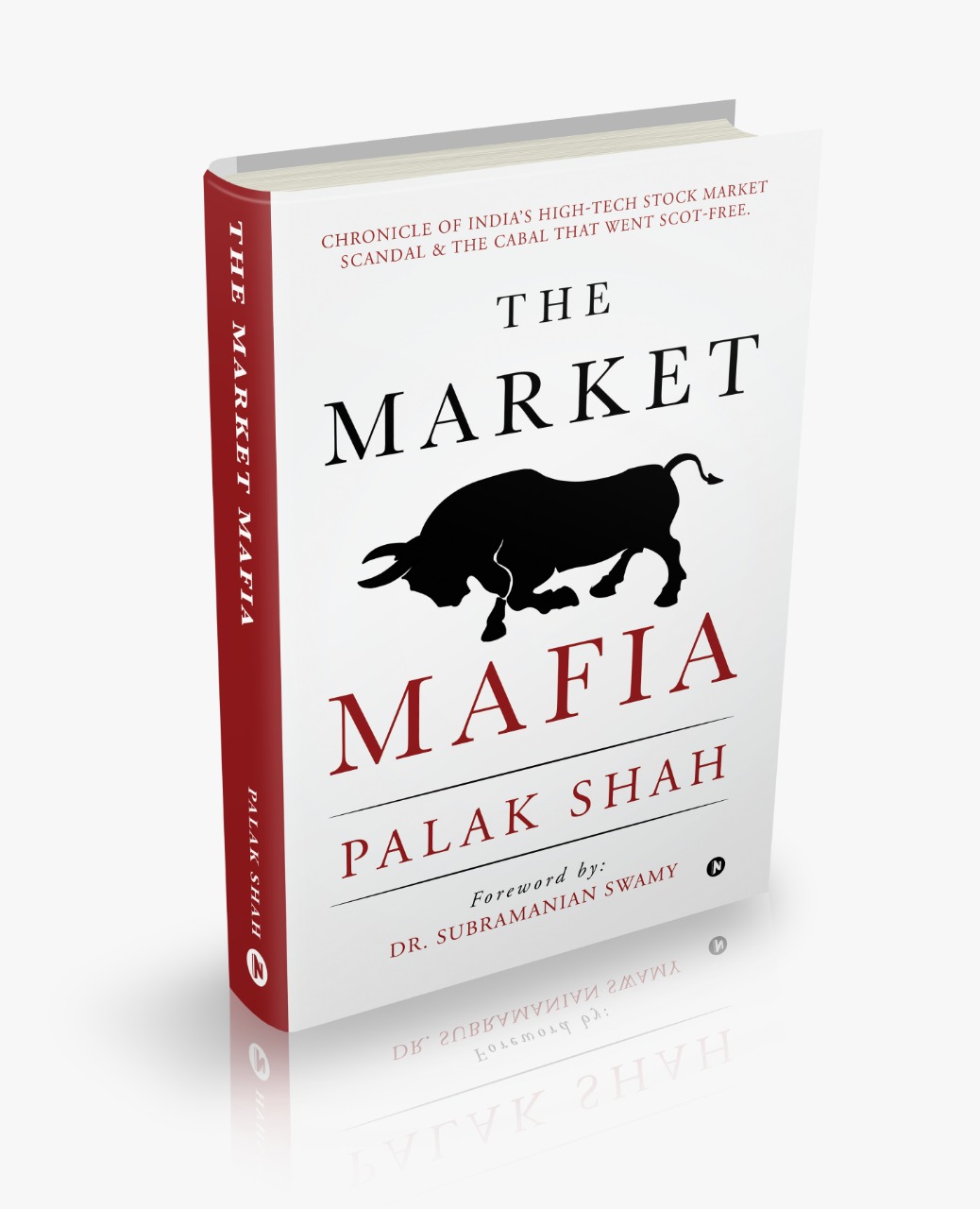Can SEBI gloss over a broad daylight robbery?
Market regulator Securities and Exchange Board of India (SEBI) is contemplating setting up a virtual museum of the securities market to highlight achievement and milestones. It would do well if it creates a list of failures. There are many which the market regulator saw but did nothing to stem the rot, the colocation scam at the National Stock Exchange (NSE) being one of them.
Seasoned journalist and market tracker Palak Shah’s freshly minted book, The Market Mafia offers an insider view of the workings in India’s stock exchange ecosystem. He has probed the colocation scam that took place at the NSE and how the market regulator glossed over the huge insider manipulation that was conducted by the master of orchestra, a senior minister in the previous UPA government.
The news of this colocation scandal has, in some words or more, appeared all over the media in India, and parts of Asia. But then, the NSE is not the economy, in many ways it is the graph of rich people’s feelings in India, and some NRIs abroad. So what does the colocation scam tell us, what does it imply about the way the exchanges work in India? Palak offers some excellent answers in the book that also has a foreword by Subramanian Swamy, BJP MP whose brilliance in unearthing corruption is unputdownable.
So Palak is clear that the stock exchange is inherently amoral and rarely cares about rules which should be the same for everyone. But it did not happen in NSE. It is like an exchange which, encouraged by an influential politician, former Finance Minister, P Chidambaram in this case, did not care about the health of the brokers, it did what it was told.
The NSE, as Palak explains, had a peculiar function: It may sound a bit wonky but the idea to help one set of brokers, and fool another set of brokers. It is like offering question papers to students an hour in advance of the examination while others stand outside the class.
For many, it was deeply uncomfortable to watch the NSE colocation party wherein the exchange got away with almost anything and everything, all SEBI could push through is a handful of fines that look like breadcrumbs when actually it should have been giant pieces of bread loaves. The band of brothers at NSE charged into the market by manipulating the system to their benefit, they did not care that other brokers were going to get played. Palak Shah’s investigation shows the colocation scam at the exchange was one big party where many suffered losses and the total could be way beyond – this is my calculation – ₹50,000 crore. Sadly the market regulator saw this as merely some economic faux pas. There were no self-enforcing methods installed at the NSE to clean up the inequality in the system.
What was both sad and unfortunate was the distortions were obvious and provable but remained uncorrected. SEBI remained silent, says Palak in his very authentic account of the Algo Trading Scandal, data theft at the NSE and the Multi Commodities Exchange (MCX). Chapter after chapter, he not only explains the fraud, he also cements with enough proof and data how questionable activities were institutionalised in the Indian financial markets.
Palak calls them the new age Harshad Mehta, the new age Big Bulls. Harshad Mehta worked with his band of brothers, and is a dead man now. There is a movie to his name. But this one is a deadly cabal of influential bureaucrats, executives from various stock exchanges, SEBI officials and stock brokers who carry high political patronage on their sleeves, and do not blink their eyelids before taking cash out of the purses of gullible retail investors.
The problem of Indian exchanges and Indian markets is simple: There is no awareness, there is no alertness. Those who run it will tell you this is the best on offer, and those who invest eventually land up as hapless investors.
The Market Mafia explains how and why Chandrashekhar Bhasker Bhave remained a mute spectator when the markets were undergoing changes. It was around 2008 when machines replaced man-made operations at the bourse, High-Frequency Trading (HFT) driven Algorithms (Algos) were pushing quick buy and sales of stocks. There were radical alterations in India’s high-voltage equity trading game.
“Securities and Exchange Board of India (SEBI), the ‘super-cop’ responsible for policing it, was at a nadir in following its Dharma of ensuring ‘fair market access’ to all participants when HFT-guided Algos came into play. Bhave, the then SEBI chairman, was apparently busy fighting his own battles.”
“As a sacred rule, no trader can have preferential access to a stock exchange platform. And the ethics demand that no tool, order type or service can be obtained exclusively by a few from the exchange by whatever means, even as the rest remain forbidden from it. But technology changed everything; it turned the stock markets into an ‘Animal Farm’. The elite few with their tech tools became ‘more equal’ than the rest.”

“Only a few brokers who used NSE’s COLO grid knew the nuts and bolts of the technology that was driving the markets, while the outside world remained in pitch-darkness on the insides of the space-age like tech platform. But that invoked no conflict from Bhave’s point of view. He allowed the most disruptive changes including HFT driven Algos and COLO operations to seep into the stock market trading microstructure by NSE without a deeper scrutiny. He turned into a recluse when someone told him that NSE was sharing TBT data exclusively.
“Ajay Shah and Susan Thomas, the two Mumbai-based professors who were celebrities in the realm of capital market research, had spun a flourishing family enterprise at the NSE, writes Palak in his brilliantly-researched book.

Ajay and Susan were captivated by Algo trading. As PhD scholars from the University of Southern California (USC), they behaved more like modern-day Utopians, idealistic reformers in shaping the policy narrative for NSE. Both were hardened advocates of derivatives trading and wrote papers, blogs and newspaper columns churning out pompous theories to showcase its traits. NSE zealously guarded its higher volume churn in the F&O from rivals like the BSE.”
SEBI’s investigation that followed a whistleblower letter in 2015 about Algo trading scam at NSE revealed how Ajay got crucial data from the exchange for years without any formality. What and how much data did NSE share with Ajay and Susan? This is simply not traceable. SEBI too is clueless. Later, it came to light that the couple with their family enterprise had devised a lucrative business model of Algo trading software and even sold it to clients. “So how did this all happen?”
It all happened during Bhave’s second stint at SEBI, which happened only because the then Finance Minister (FM) Palaniappan Chidambaram lobbied for Bhave. Chidambaram knew the markets. “His cheeky, off the cuff statements often moved Sensex and Nifty, so much so that the two benchmark share indices of BSE and NSE had come to be known as the barometer of Chidambaram’s announcements.

“Before Bhave’s ouster as SEBI chief, the high-tech trading game was all set at NSE with all advanced tech tools fully in operation. Gopal’s letter was a stark picture of why SEBI under Bhave allowed NSE to do what it wanted to. As NSE, the largest promoter of NSDL, had let Bhave do what he wanted to at the depository. NSE had raised no finger at Bhave even when the SEBI probe under Damodaran highlighted the then NSDL chief’s laxity in the fake demat accounts scam.”
Palak continues in his book that reads like a James Hadley Chase thriller.
He explains why Chidambaram pushed Participatory Notes investments and how PN holding by FIIs in stocks and derivatives combined jumped to a colossal ₹3,53,484 crores (51.6 percent of FII assets under custody) by August 2007. Now remember, when Chidambaram became the Finance Minister in March 2004, P-Note holding of FIIs stood at ₹31,875 crores (20 percent of assets under custody).
Did the SEBI care? Did it act like a watchdog, a market regulator?
Writes Palak in his book: “An informal clique of current and serving bureaucrats, SEBI officials, lawyers and corporate interests orchestrated this subversion of the due process of law. They illegally interfered with independent SEBI adjudication, manipulated legal opinions, suppressed and misrepresented facts and misled the SEBI Board and Government officials about the legality of the Orders. Law, regulations and established precedent were violated.”
“Those handful people, occupying the upper echelons of NSE, were letting down the very institution where they were employed for a long time. This cabal with no regard for rules or fear of law were embodied in abuse of power with impunity.”
“It was only when Enron dragged India to the International Court of Justice (ICJ), Chidambaram relinquished his position as its legal adviser at the time when he was made the FM by Sonia Gandhi. Ironically, the Congress-led government in which Chidambaram virtually held the number 2 ranking, engaged a Pakistani-origin lawyer named Khawar Qureshi to present the Indian side at ICJ. Pakistan has the status as India’s enemy and the dimwit lawyer lost the ICJ case in months. Harish Salve was fighting the case for India at ICJ before UPA came to power. Nobody knows why the erudite legal expert was replaced by an enemy country’s inefficient lawyer.”
“Interestingly, the lawyer who argued for Chidambaram in the case was another prominent lawyer-cum-politician and BJP leader, Arun Jaitley. Both Chidambaram and Jaitley took turns at becoming India’s successive FMs, albeit from different political parties and governments. But the grapevine goes that they were brothers in arms and often came to the rescue of each other. But that is a different story.”
The big data theft at NSE was conducted by a handful of people who were backed by influential ministers in the corridors of power in the Indian Capital.
The cabal still exists. Grab a copy, and read through. You will know a lot about modern day bandits who continue to be protected by some of the top institutions in the country.

